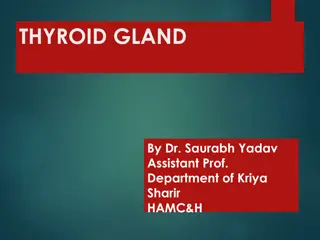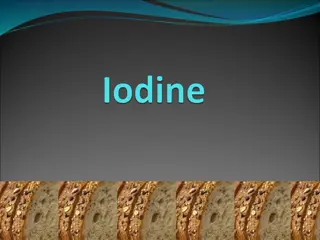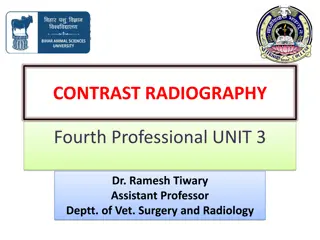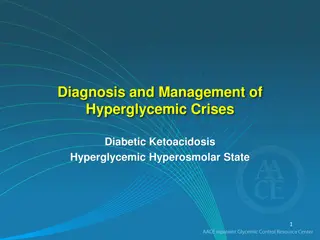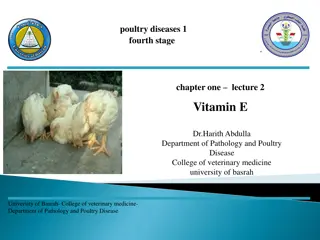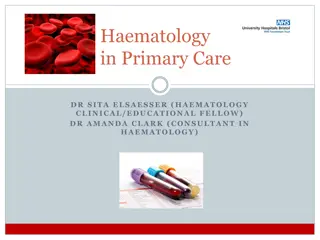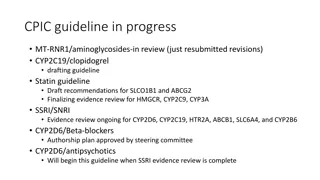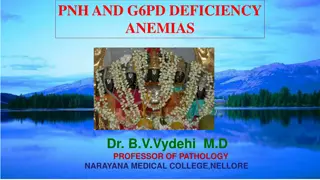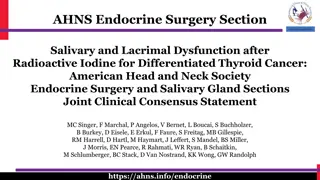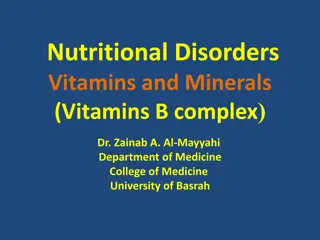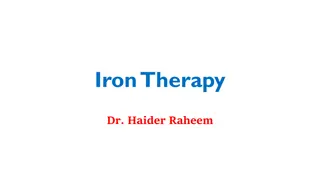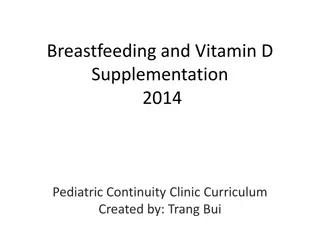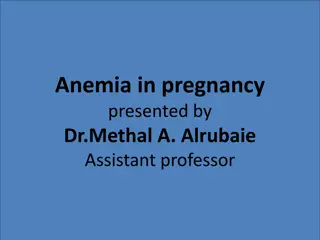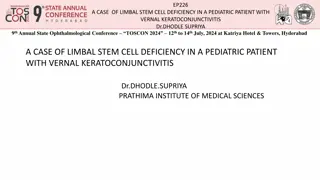Vitamin A Deficiency (Hypovitaminosis A)
Learn about the causes, symptoms, and effects of Vitamin A deficiency, including night blindness, corneal keratinization, and impaired immune function. Explore the epidemiology and pathogenesis of this condition.
0 views • 13 slides
Efficacy and Safety of Ferric Carboxymaltose for Heart Failure with Iron Deficiency
Iron deficiency is prevalent in heart failure patients with reduced ejection fraction and is linked to poor outcomes. The HEART-FID trial investigates the impact of intravenous ferric carboxymaltose (FCM) on all-cause mortality, heart failure hospitalizations, and exercise capacity in chronic HFrEF
1 views • 17 slides
Understanding Mental Deficiency: Causes and Classifications
Mental deficiency, also known as intellectual disability, is characterized by significantly below-average intellectual functioning before the age of 18, along with limitations in adaptive behaviors. It is measured using standardized IQ tests, with classifications ranging from profound to mild. Two m
3 views • 65 slides
Overview of Nutritional Diseases and Disorders
Nutritional diseases arise from imbalances between the body's nutrient and energy requirements and their supply. Nutritional deficiencies can lead to clinical diseases, while excessive intake can result in diseases of affluence. Common nutritional disorders include low birth weight, PEM, obesity, go
4 views • 6 slides
Understanding Cholestasis: Etiology, Clinical Manifestations, and Complications
Cholestasis is characterized by reduced bile flow and elevated direct bilirubin. It is critical to differentiate it from neonatal jaundice. In conditions like biliary atresia and 1-antitrypsin deficiency, early diagnosis and intervention are crucial to prevent liver failure. Clinical manifestations
5 views • 14 slides
Understanding the Thyroid Gland: Functions and Hormone Synthesis
The thyroid gland is a vital endocrine gland located below the larynx, responsible for producing thyroid hormones essential for regulating metabolism. This gland consists of follicles lined with follicular cells, producing thyroglobulin and thyroid hormones T3 and T4. Iodine plays a crucial role in
0 views • 40 slides
Understanding the Importance of Iodine Supplementation for Pregnancy and Breastfeeding
Iodine is an essential mineral crucial for thyroid function and preventing birth defects like cretinism. It is found in varying amounts in soil, iodized salt, seafood, and certain foods. Iodized salt contains 400 micrograms of iodine per teaspoon. Daily iodine requirements differ based on age and li
0 views • 13 slides
Understanding the Gram Stain Technique in Medical Microbiology Lab
The Gram stain is a crucial technique in bacteriology, dividing bacteria into Gram-positive and Gram-negative groups based on cell wall characteristics. This method involves using crystal violet, iodine, ethanol, and safranin to differentiate between the two types of bacteria. Gram-positive bacteria
0 views • 11 slides
Update on B12 Deficiency Guidance by Lothian Health Services
Vitamin B12 deficiency is a complex condition with various manifestations, including neurological symptoms. The updated guidelines address key areas such as neuro symptoms, coeliac disease, and transitioning from intramuscular to oral treatment. Testing indications and approaches for pernicious anae
0 views • 12 slides
Kinetic Reaction of Sulphite and Iodate - Landolt Reaction Overview
The kinetic reaction of sulphite ions and iodate in the Landolt reaction is a fascinating chemical process where slow and fast reactions occur sequentially, resulting in a visually striking color change. By monitoring the induction period between the two reactions, one can observe the formation of h
0 views • 9 slides
Fortified Salts Market ppt
Global Fortified Salts Market Breakdown by Application (Food Processing Industry, Hotel & Restaurant, Household, Others) by Type (Iodine Fortified Salt, Iron Fortified Salt, Others) by Sales Channel (Supermarkets\/Hypermarkets, Convenience Stores, On
0 views • 8 slides
Introduction to Lipid Biosynthesis and Fixed Oils in Pharmacognosy Lecture
In this lecture by Asst. Prof. Dr. Ibrahim Salih, the focus is on lipid biosynthesis, specifically the three phases involved: glycerol formation, fatty acid biosynthesis, and triglyceride production. The classification of fixed oils into drying, semi-drying, and non-drying categories based on their
0 views • 13 slides
Understanding Contrast Radiography in Veterinary Surgery and Radiology
Contrast radiography is a crucial technique in veterinary medicine that involves using contrast media to enhance visualization of organs and lesions. Different types of contrast media, positive and negative, are used to alter tissue radio density for better demarcation. Barium and iodine compounds a
0 views • 14 slides
Iron Deficiency Anemia in a 78-Year-Old Man: A Case Study
A 78-year-old man presents with symptoms of fatigue, headache, and abdominal pain, leading to a diagnosis of iron deficiency anemia. His medical history includes hypertension, type II diabetes, and chronic shoulder pain. Investigations reveal hypochromic, microcytic anemia with low iron levels and h
0 views • 117 slides
Understanding Post-Parturient Haemoglobinuria in Dairy Cows
Post-Parturient Haemoglobinuria (PPH) is a metabolic disease affecting high-producing dairy cows after calving, characterized by hemolysis, hemoglobinuria, and anemia. Common in buffaloes and cows, it is caused by phosphorus deficiency in diet, affecting intracellular functions and leading to clinic
0 views • 9 slides
Exploring Dialysis Tubing Permeability: Glucose, Starch, and Iodine Experiment
This experiment investigates the permeability of dialysis tubing to glucose, starch, and iodine. By observing color changes and conducting tests, the study demonstrates the selective movement of molecules across the membrane, highlighting the concept of selective permeability in cells.
0 views • 9 slides
Demonstration of Salivary Enzyme Amylase Action in B.Sc. Practical
Salivary enzyme amylase, also known as ptyalin, plays a crucial role in breaking down starch and glycogen into maltose. This practical session in the Zoology department explores the action of salivary enzyme amylase at a temperature of 37°C and pH of 6.6. By conducting experiments with starch, iodi
0 views • 8 slides
Understanding Vitamin K Deficiency in Veterinary Medicine
Vitamin K deficiency in animals can lead to serious health issues due to its crucial role in blood clotting and bone metabolism. Different sources of vitamin K, such as plant material and bacterial fermentation, provide essential forms like K1 and K2. Factors contributing to deficiency include fat m
0 views • 8 slides
Understanding Marketing Assistance Loans (MAL) and Loan Deficiency Payments (LDP) for Farmers
Farmers can benefit from Marketing Assistance Loans (MAL) and Loan Deficiency Payments (LDP) to manage cash flow and ensure price floors for their harvested grain. MAL offers low-interest loans while LDP provides payments if prices fall below a certain level, offering financial support during challe
0 views • 39 slides
Understanding and Managing Hyperglycemic Crises: DKA and HHS
Hyperglycemic crises such as Diabetic Ketoacidosis (DKA) and Hyperglycemic Hyperosmolar State (HHS) are life-threatening emergencies characterized by severe hyperglycemia and metabolic imbalances. DKA involves absolute or near-absolute insulin deficiency leading to ketone body production and systemi
0 views • 82 slides
Rapid Elemental Analysis of Human Fingernails Using Laser-Induced Breakdown Spectroscopy
Elemental analysis of human fingernails is conducted using Laser-Induced Breakdown Spectroscopy (LIBS) to diagnose and monitor zinc deficiency in the body. Zinc deficiency is a significant health issue globally, affecting billions of people. By utilizing LIBS technology on fingernail samples, resear
0 views • 15 slides
Understanding Geochemistry and Its Impact on Human Health
This session, led by Dr. Patrick Asamoah Sakyi from the Department of Earth Science at UG, delves into the significance of geological elements in human health, discussing diseases arising from their deficiency or excess intake. Topics include geophagy, fluorine's impact on dental health, iodine defi
0 views • 48 slides
Importance of Iodine Nutrition During Pregnancy
Iodine is essential for thyroid hormone synthesis, crucial for neurological development in utero and early life. Adequate iodine levels prevent adverse effects like decreased IQ, goiter, hypothyroidism, and hyperthyroidism. Mild to moderate iodine deficiency in pregnant women can have adverse outcom
0 views • 21 slides
Understanding Vitamin E Deficiency in Poultry: Symptoms and Implications
Vitamin E deficiency in poultry can lead to serious conditions such as encephalomalacia (crazy chick disease) and exudative diathesis. Symptoms include ataxia, testicular degeneration, and early embryo mortality. Post-mortem lesions show soft and swollen brains with minute hemorrhages. It is crucial
0 views • 14 slides
Haematology in Primary Care - Clinical Insights and Guidelines
Explore key topics in haematology such as leucopenia, B12 deficiency, and myelodysplastic syndrome with detailed guidance on interpreting full blood counts, red flags, investigations, and management strategies. Learn about special situations like B12 deficiency in pregnancy and malabsorption issues.
1 views • 30 slides
Guideline Updates on Drug Safety in G6PD Deficiency
Ongoing work includes progress on CPIC guidelines for aminoglycosides, clopidogrel, and statins, along with evidence reviews for various enzymes and medications. A review of G6PD deficiency and rasburicase safety is being conducted, categorizing drugs as low-to-no risk, high-risk, or medium-risk bas
0 views • 35 slides
Understanding Copper Deficiency in Ruminants
Copper deficiency in ruminants can be primary or secondary, affecting enzyme activity and gene expression. Risk factors include diet, soil characteristics, and breed. Pathogenesis involves effects on tissues, wool loss, body weight, diarrhea, anemia, bone health, and heart function.
0 views • 18 slides
Understanding Nitrogen Deficiency in Waterlogged Soils
Explore the impact of waterlogged soils on nitrogen deficiency in plants and discover the role of active transport, soil oxygen displacement, and chlorophyll production. Engage students in solving the issue through an interactive activity that integrates their knowledge of plant biology concepts.
0 views • 12 slides
Understanding G6PD Deficiency Hemolytic Anemia: Biochemical Basis and Implications
G6PD deficiency hemolytic anemia is an inherited condition characterized by reduced levels of glucose-6-phosphate dehydrogenase (G6PD), leading to impaired production of NADPH. This deficiency affects the Pentose Phosphate Pathway (PPP) and can result in oxidative stress, causing damage to DNA, prot
0 views • 18 slides
Understanding Paroxysmal Nocturnal Hemoglobinuria (PNH) and G6PD Deficiency Anemias
Paroxysmal Nocturnal Hemoglobinuria (PNH) is a rare acquired disorder causing hemolytic anemia due to red cell membrane defects, leading to increased sensitivity to complement. On the other hand, G6PD Deficiency is a genetic condition causing hemolytic anemia due to impaired function of the G6PD enz
0 views • 12 slides
The Halogens: Properties and Uses of Fluorine, Chlorine, Bromine, Iodine, and Astatine
The halogens are a group of non-metals in the periodic table with seven electrons in their outer shell, making them highly reactive. This article discusses the properties and uses of fluorine, chlorine, bromine, iodine, and astatine. Fluorine is utilized in toothpaste, chlorine is commonly used as a
0 views • 13 slides
Reactor Xenon Poisoning and Iodine Pit Phenomenon
When a non-stationary reactor is shut down or its load is reduced to zero, xenon poisoning occurs due to the disruption of dynamic equilibrium between the increase and decrease of 135Xe. This leads to a temporary increase in 135Xe concentration, followed by a decrease as it decays. The reactivity ma
0 views • 58 slides
Salivary and Lacrimal Dysfunction after Radioactive Iodine Treatment
Radioactive iodine (RAI) is commonly used in treating differentiated thyroid cancer but can lead to salivary and lacrimal dysfunction. This joint clinical consensus statement by the American Head and Neck Society Endocrine Surgery and Salivary Gland Sections highlights the importance of understandin
0 views • 20 slides
Understanding Thiamine Deficiency and Beriberi: Causes, Symptoms, and Treatment
Thiamine (Vitamin B1) deficiency, often seen in conditions like alcoholism and poor dietary intake, can lead to serious health issues such as beriberi. This article delves into the causes, clinical features, and treatment options for thiamine deficiency, including the different types of beriberi and
0 views • 53 slides
Understanding Iron Deficiency Anemia and Therapy
Iron deficiency anemia occurs when the body lacks sufficient iron to produce hemoglobin, leading to symptoms like fatigue and weakness. Iron therapy, led by professionals like Dr. Haider Raheem, helps restore iron levels. Important information includes body iron distribution, absorption mechanisms,
0 views • 27 slides
Breastfeeding and Vitamin D Supplementation: Clinical Insights
Understanding the clinical presentation and risks of Vitamin D deficiency in infants, especially those who are breastfed, is crucial. This curriculum covers acute versus chronic presentations of deficiency, associated symptoms, and risk factors such as sunlight exposure, geographical location, air q
0 views • 19 slides
Anemia in Pregnancy: Types, Etiology, and Management
Dr. Methal A. Alrubaie, an assistant professor, presents a detailed overview of anemia in pregnancy. The content covers the classification of anemia types, their etiology, clinical presentation, effects on both mother and fetus, investigation methods, and treatment approaches. Various types of anemi
0 views • 19 slides
Case Study: Limbal Stem Cell Deficiency in Pediatric Patient with Vernal Keratoconjunctivitis
Limbal stem cell deficiency (LSCD) is a rare condition characterized by inadequate corneal rejuvenation and conjunctivalization of the cornea. In this case study, a 14-year-old male with Vernal Keratoconjunctivitis presented with itching, eye rubbing, and corneal epithelial scarring resembling a who
0 views • 6 slides
Understanding Learners with Intellectual Deficiency
Individuals with intellectual deficiency or mental retardation may exhibit immature behaviors, lack judgment, and show signs of delayed development. They require special care, early diagnosis, parental assistance, and educational support to reach a reasonable degree of educational achievement and so
0 views • 7 slides
Understanding Primary Immunodeficiencies - Part 2
Primary immunodeficiencies are a group of disorders characterized by defects in the immune system. Severe Combined Immunodeficiency (SCID) and related conditions like JAK-3 deficiency, IL-7 R or CD45 deficiency, and Omenn syndrome are discussed in detail, highlighting the genetic basis, clinical man
0 views • 41 slides





